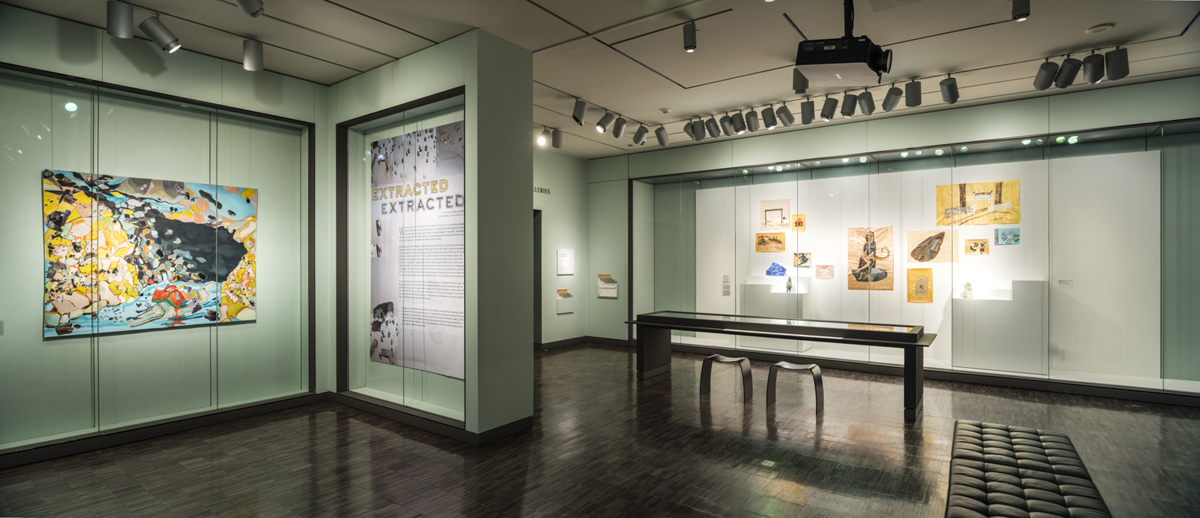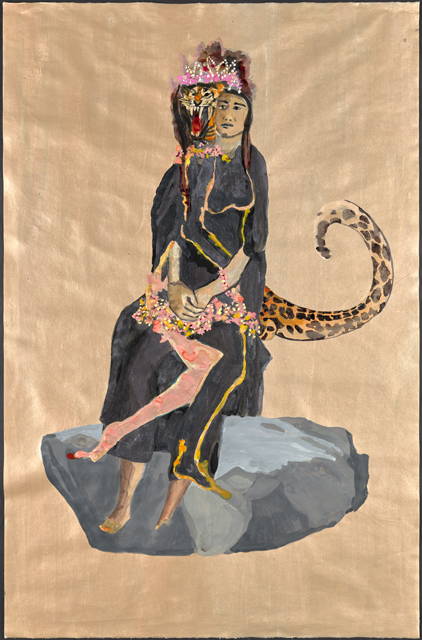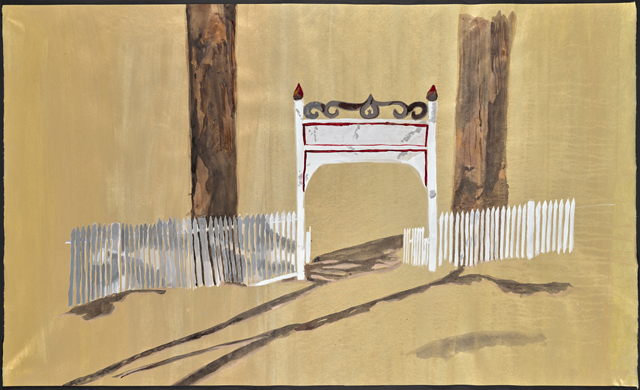On the second floor of San Francisco’s Asian Art Museum, in what is usually a gallery filled with Chinese paintings, local artist Ranu Mukherjee’s exhibition Extracted blends historical research with a contemporary multimedia practice in a welcome break from museum business as usual.
Extracted is a trilogy, like many of the best stories. The initial installment, on view now, opened Nov. 6 with a large-scale video; works on paper, fabric and canvas; and a few selected items from the museum’s collection. Part two premieres Jan. 26, 2016, with the final chapter unveiled May 3.

While one might have other trilogies on the mind right now (ahem, Star Wars), there’s no less drama in Mukherjee’s Extracted — it just happened not so long ago in a galaxy we call home. Extracted mines disparate sources: the California Gold Rush, the Chinese Exclusion Act of 1882, an ancient Chinese text, The Classic of Mountains and Seas and current global economies to create a richly layered installation of image, historical fact and mythology.
The project, curated by Marc Mayer, senior educator of contemporary art, is ambitious and durational, occupying prime real estate in the museum’s exhibition space for close to 10 months.
In Breach, the single-channel video that anchors Extracted, a jumble of blue, gold and gray rock explodes into a slow-moving field of drifting fragments. The pieces speed up purposefully and resolve into an image of a dark cave with water dribbling from its entrance.
The cave pictured in Breach is not a natural geologic formation, but the aftermath of blasting at a former mining site along the Yuba River. That history is long buried, along with the bodies of the Chinese laborers who mined it, and hidden from view. “This is the grounding of the project and its relationship to the Gold Rush,” Mukherjee says. The Gold Rush is more than just popular imagery of prospectors, she says, “The image of gold is this big hole or these cemeteries.”

To the left of the projected video, a glass case contains a salon wall of Mukherjee’s ink and pigment works on paper, while pedestals support three carved sculptures from the museum. The images and objects form “A Visual Lexicon” of Mukherjee’s research, while laminated texts help contextualize the many visual references — often illuminating little-known histories in the process.
For instance, the face on a drawing of the mythological figure Queen of the West, 350 leagues further West, is that of Mary Tape, a Chinese immigrant who sued the San Francisco Board of Education to allow her American-born daughter to attend the city’s public school. The case went all the way to the Superior Court, which in 1885 handed down a decision in favor of the Tapes. (This victory was short lived, as California established the right to create separate schools for “oriental” children shortly thereafter.)
The predominant hue within the case is a warm, shimmering gold, a thematic color for the first part of Extracted. Come January, this will shift to cinnabar, a brilliant red mineral connected to mining processes and alchemy. And in May, jade, a stone associated with immortality and burial rituals, will dominate. Mukherjee also notes the imagery will become more speculative as the project progresses — both in the imaginative and financial senses.

If Extracted seems a bit sparse now, with its empty pedestals and oversize display case, it is also expectant. The process of extraction — whether that’s digging for information or precious metals — is never done. And the deeper one gets, the more threads emerge that tie past, present and future together.
“This represents the cacophony of how research-based her work is and how not arbitrary it all is,” Mayer says. “I wanted to create this constellation that would allow Ranu’s work to shine, to sing, to be present. My desire, simultaneously, is to interrupt the experience of the collection galleries.”
Next year, the Asian Art Museum celebrates its 50th anniversary with Hidden Gold, an exhibition of golden objects culled from the museum’s collection. Mukherjee’s project adds a much-needed contemporary and critical perspective to the celebratory show, reminding us that any Gold Rush, including our current startup boom, has a certain amount of buried (and uncomfortable) history under its glossy sheen.
Extracted is on view through Aug. 14, 2016 at the Asian Art Museum in San Francisco. For tickets and more information, visit asianart.org.